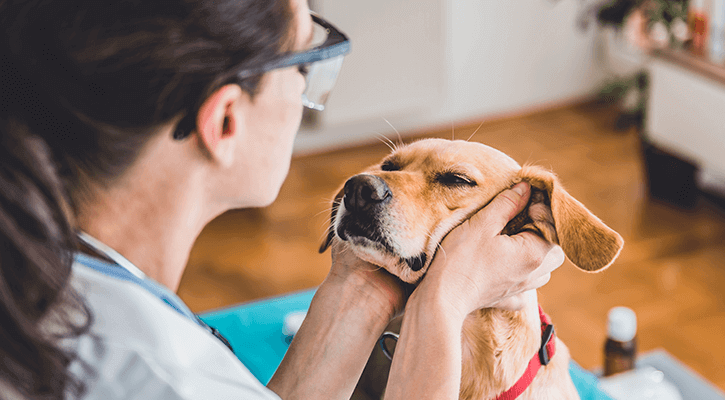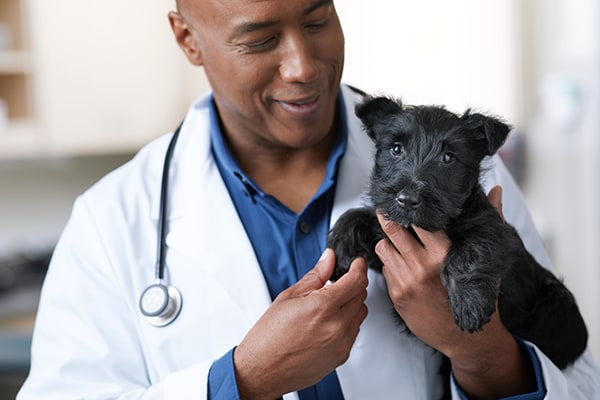What Sets an emergency vet bellingham Apart From a Regular Animal Hospital?
What Sets an emergency vet bellingham Apart From a Regular Animal Hospital?
Blog Article
All About Veterinarian Surgical Procedure: Recognizing the Relevance of Specialist Care for Your Animals
Veterinary surgery is a vital part of pet dog medical care. It includes numerous procedures, from regular optional surgical procedures to urgent treatments. Recognizing the ins and outs of these surgical treatments can assist animal owners make educated decisions. The prep work, implementation, and healing phases are crucial for making certain the health of animals. With proper knowledge, proprietors can navigate the complexities of veterinary care. What variables should be thought about prior to a pet dog goes through surgical treatment?
Kinds Of Vet Surgeries
When a family pet calls for surgical intervention, understanding the different kinds of veterinarian surgical treatments can aid animal owners make informed choices. Vet surgical procedures can be generally categorized into three main kinds: optional, immediate, and emergency surgical treatments. Elective surgical procedures, such as spaying or neutering, are planned procedures that are not immediately life-threatening. Urgent surgical treatments, like those for foreign body elimination, should be executed quickly yet are not life-threatening in the minute. Emergency surgical procedures, such as those dealing with serious injury or internal bleeding, are important and call for prompt attention.Additionally, surgical procedures can vary in intricacy, varying from minimally intrusive laparoscopic treatments to much more extensive open surgical treatments. Each sort of surgical procedure carries its own risks and recovery procedures. Comprehending these groups allows animal owners to involve in purposeful discussions with vets, resulting in much better results for their precious pet dogs.
Preparing for Your Animal's Surgical procedure
Getting ready for a pet dog's surgical procedure includes a thorough checklist to guarantee all fundamentals are covered. Efficient communication with the veterinarian is important for recognizing the treatment and any kind of required pre-operative actions - canine tplo surgery. Furthermore, having clear post-operative treatment directions will assist owners offer the best support for their recovering animals
Pre-Surgery List Basics
Assuring a smooth medical experience for a family pet requires careful preparation and attention to information. A pre-surgery checklist is essential for pet dog owners to adhere to. Initially, verifying the scheduled surgical treatment date and time is crucial. Owners should also validate that their family pet has actually fasted according to the veterinarian's guidelines, generally for 8-12 hours prior to surgical treatment. Collecting essential clinical documents, consisting of inoculation background, is crucial for the veterinarian's evaluation. It is likewise recommended to prepare a comfy space at home for the pet's healing after surgical treatment. Proprietors need to have a strategy for transportation to and from the veterinary center, making certain that the family pet is safe and secure and comfortable throughout the journey. Complying with these steps can greatly enhance the medical experience.
Interacting With Your Veterinarian

Efficient communication with the veterinarian is essential for an effective surgical experience for animals. Owners ought to be prepared to review their pet dog's clinical history, including any type of pre-existing problems, medicines, and allergic reactions. This information assists the veterinarian examine risks and tailor the medical plan as necessary. Additionally, family pet proprietors ought to ask questions regarding the procedure, anesthesia, and expected end results to assure they totally recognize the process. Making clear any questions can reduce stress and anxiety for both the family pet and the owner. It is additionally essential to interact any kind of behavior changes or issues observed in the family pet leading up to the surgical treatment. Inevitably, clear dialogue promotes depend on and cooperation, making sure that family pets obtain the very best possible treatment throughout their medical journey.
Post-Operative Care Instructions
After reviewing the surgery with the veterinarian, animal owners should concentrate on post-operative treatment directions to promote a smooth healing for their pet dogs. These instructions usually consist of monitoring the surgical website for signs of infection, such as inflammation or discharge. Pet dogs might need to be kept one's cool and constrained to stop excessive motion that could interfere with recovery. Discomfort management is important, so proprietors must adhere to the veterinarian's guidance on providing medicines. In addition, nutritional constraints may be suggested to stay clear of gastrointestinal trouble. Regular follow-up consultations are very important to guarantee proper healing and deal with any type of worries. By adhering to these post-operative treatment guidelines, animal proprietors can substantially add to their pet's healing and total wellness.
The Surgical Process Explained
The surgery for pet dogs incorporates vital actions that assure their safety and security and recuperation. Pre-surgery preparations are necessary for reducing risks, while post-operative care standards play an important role in promoting healing. Understanding these parts assists pet dog owners browse the surgical experience more effectively.
Pre-Surgery Preparations
Before an animal undertakes surgical procedure, numerous important preparations should take area to guarantee a secure and successful procedure. First, a complete vet assessment is vital to assess the pet's general wellness and identify any prospective risks. This might consist of blood tests, imaging, or other diagnostics. The vet will certainly additionally go over anesthesia options customized to the pet dog's specific requirements. In addition, animal proprietors are typically instructed to keep food and water for a specified time prior to surgical procedure to reduce the danger of problems during anesthesia. It is necessary for owners to give a total case history, read more including any type of drugs or allergies, making certain the surgical team has all required information. Proper communication and adherence to pre-surgery guidelines can substantially enhance the outcome of the treatment.
Post-Operative Treatment Standards
Appropriate post-operative treatment is essential for ensuring a pet's recuperation adhering to surgery. After the procedure, pet dogs must be kept track of very closely for any kind of indications of issues, such as too much bleeding, swelling, or uncommon behavior. It is very important to adhere to the veterinarian's instructions pertaining to drugs, consisting of painkiller and antibiotics. Pets ought to be maintained in a silent, comfy environment to reduce stress and promote healing. Restricting activity is important; short, leashed walks may be necessary, however jumping or running must be prevented. Normal follow-up appointments need to be arranged to analyze the recovery process. Additionally, the medical website should be kept clean and dry, with any indicators of infection reported to a vet quickly. Sticking to these guidelines enhances healing end results.
Anesthetic and Pain Administration
Reliable anesthetic and pain administration are important components of vet surgical procedure, making sure that pet dogs remain comfortable and risk-free throughout the treatment. Vets analyze each animal's individual needs, taking into consideration variables such as age, weight, wellness status, and the kind of surgical treatment being performed.Anesthesia protocols generally include a mix of pre-anesthetic drugs, induction representatives, and inhalant anesthetics, permitting for precise control over the animal's degree of consciousness. Tracking during surgical procedure is crucial; vets continuously observe crucial indications to address any kind of prospective complications promptly.Pain administration methods may include opioids, non-steroidal anti-inflammatory drugs (NSAIDs), and anesthetics, tailored to the pet dog's certain scenario. This complex strategy helps reduce discomfort and advertises a smoother medical experience. By prioritizing reliable anesthetic and discomfort monitoring, veterinary specialists enhance the general well-being of pets undergoing operations, ensuring they receive the highest possible requirement of treatment.
Post-Operative Treatment and Recovery
Complying with surgical procedure, the emphasis changes to post-operative care and recuperation, which is important for making sure a pet dog's safe go back to normal tasks. During this duration, pets call for a silent, comfy environment to help recovery. Proprietors must carefully check their pets for any kind of indicators of pain or unusual behavior.Veterinary standards usually consist of details instructions connected to medicine management, wound treatment, and dietary adjustments. It is vital to stick to these referrals to decrease problems and advertise healing. Animals may require to be limited from strenuous tasks, such as running or leaping, throughout their recuperation period (emergency vet).Regular follow-up visits with the vet permit for monitoring of the pet dog's development and prompt modifications to the treatment plan. Supplying psychological assistance and companionship can additionally enhance a family pet's healing experience, assisting to reduce stress and anxiety and stress and anxiety. Generally, attentive post-operative treatment plays a considerable function in accomplishing an effective recovery
Identifying Difficulties After Surgery
Just how can pet dog proprietors recognize issues after surgical treatment? Awareness of details indications is crucial for ensuring the health of family pets throughout recovery. Common indicators consist of too much swelling, soreness, or discharge at the surgical website, which might symbolize infection. Furthermore, consistent pain, suggested by yawping or hesitation to relocate, must trigger immediate attention. Adjustments in appetite or water consumption can also show issues; a decline in these behaviors might signify pain or distress.Moreover, pet owners should check their pets for any uncommon behavior, such as sleepiness or problem breathing, as these can be indicators of severe problems. Throwing up or looseness of the bowels following surgical procedure might call for urgent veterinary evaluation. Recognizing these complications early can greatly influence an animal's healing process, stressing the significance of alertness and punctual communication with a vet for any concerning signs and symptoms.
The Duty of Vet Professionals in Surgical Treatment
Vet specialists play a vital duty in ensuring the safety and security and success of surgeries for pets, particularly adhering to surgical procedure when monitoring and treatment are vital. These specialists consist of veterinarians, veterinary service technicians, and support personnel, every one of whom contribute specialized abilities to the surgical process.Before surgical procedure, vets conduct complete examinations to assess the animal's health and wellness, making sure that any type of hidden conditions are taken care of. Throughout the treatment, the surgical team supplies anesthetic, keeps sterile settings, and keeps track of crucial indicators, very important for reducing risks.Post-operative care is just as significant; veterinary professionals observe for problems, manage pain, and guide owners on recuperation methods. Their proficiency enables them to recognize very early indicators of distress or infection, making sure prompt treatment. Inevitably, the collective initiatives of veterinary experts in medical care foster a risk-free setting, promoting the wellness of animals throughout the surgical journey.

Regularly Asked Questions
Just how Do I Pick the Right Vet Cosmetic Surgeon for My Pet?
Picking the right veterinary specialist involves looking into qualifications, reviewing evaluations, and evaluating the center's environment. It is important to assess the cosmetic surgeon's experience with certain procedures and their communication design when choosing.
What Prevail Misconceptions Regarding Vet Surgeries?
Common misconceptions about veterinarian surgical procedures include ideas that they are always dangerous, unneeded, or for emergency situations. Numerous pet dog owners ignore the advantages of preventative treatments and the skill associated with vet surgical care.
How Much Will My Family pet's Surgical procedure Price?
The cost of a family pet's surgery can differ significantly based on variables such as the kind of treatment, the vet's experience, and geographical place (tplo surgery for dogs). Typically, expenditures vary from a couple of hundred to several thousand dollars

Can My Pet Consume Prior To Surgical Procedure?
Prior to surgical procedure, it is typically advised that family pets avoid eating for a specific period. This fasting aids lower the threat of difficulties throughout anesthetic. Proprietors need to consult their veterinarian for specific instructions customized to their pet dog's demands.
Suppose My Pet Dog Has Pre-Existing Wellness Conditions?
When a pet has pre-existing health and wellness problems, it's important for the veterinarian to assess these variables prior to surgical procedure. This analysis assurances appropriate safety measures are taken, decreasing risks and optimizing the family pet's total security during the procedure.
Report this page